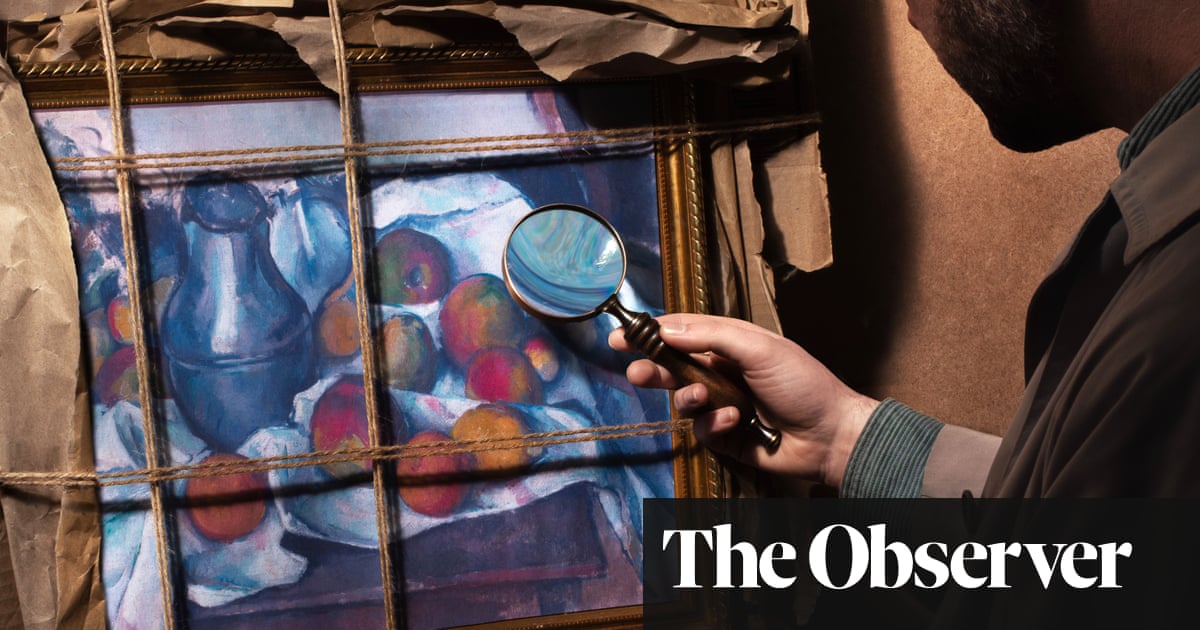
Over more than four decades, Neil Zukerman, a New York gallery owner, and his husband, Tom Shivers, filled their Chelsea loft with paintings, books, ceramics, glassware, figurines, silk flowers and countless other treasures. “We only ever had things in our house that we loved. And if we loved it, we found a place for it,” said Shivers.
But after Zukerman’s death at the age of 81 last year, Shivers decided to sell some of the couple’s extraordinary collection, including 90 works by Leonor Fini, the 20th-century artist famous for her depictions of powerful and erotic women.
The first of 10 sales from the couple’s collection will take place online from Thursday, alongside an exhibition of works by Fini and other female artists at Sotheby’s London galleries. “Neil loved Fini’s art, and always said if owning one is good, owning 100 is better,” said Shivers.
Fini – born in Argentina in 1907, raised in Italy and later a resident of Paris – was perhaps the most ferociously independent female artist of the 20th century, according to art historians.
Although her works have been included in almost every major surrealism exhibition since the 1930s, she refused to label herself a surrealist, partly because of the misogyny of the movement’s leader, André Breton. She died in 1996.
Zukerman and Fini spoke regularly by phone for two years before a face-to-face meeting in Paris in the early 1980s. “Neil learned to speak French in order to be able to converse with her. She could be incredibly kind, but she wasn’t an angel,” said Shivers
“Once an artist sent her one of his paintings to critique. It was returned to the gentleman in a manila envelope, cut into pieces. She said: ‘Sorry, couldn’t find a larger envelope.’”
On one occasion, while she was lunching with Pablo Picasso and the art dealer Julien Levy, the latter reached for a napkin that Picasso had doodled on. “Leonor picked up the napkin and said: ‘Oh Pablo! The same old shit.’ She tore it up and threw it into the gutter,” said Shivers.
“She lived with two men for 35 years. She always said a woman should have two lovers: one for sex, and one for the emotional and intellectual.”
Last year, Fini’s 1938 self-portrait, Autoportrait au scorpion, sold for $2.3m. Her paintings are in the permanent collections of the Met, Tate Modern and Centre Pompidou.
Lisa Stevenson, Sotheby’s modern and contemporary specialist, said it was “tricky to confine Fini’s work to a category or a movement; she presented a new and truly modern sense of the feminine”.
She added: “Fini’s work was revolutionary. She explored sexuality and interrogated and asserted the position of the woman away from the traditional role as a muse or mother. With her continuous investigation into the notions of female identity, and her rejection of the rational, it is natural that Fini found herself so closely linked to the surrealist movement. But her relationship to the surrealist artists was a complex one.
“Over the past decade we have seen women that were historically considered on the sidelines of the surrealist movement being rightly cultivated as serious and significant artists.”
Among the works being sold from Zukerman and Shivers’ collection is Fini’s 1975 fantastical painting Rasch Rasch Rasch … Meine Puppen Warten (Hurry, Hurry, Hurry … My Dolls Are Waiting). It depicts the artist as a child, being dressed by an adult woman while looking through a window at five partially clothed women.
The series of sales also includes Fini’s many depictions of sphinxes and other figures metamorphosing into cats, birds and skeletons. But Shivers is keeping his favourite, a painting of Tristan and Isolde which hangs over the couple’s bed. “That will stay until I’m gone,” he said.
The apartment, in a former industrial building, contains a “garden room” with a mosaic floor made up of 80,000 tiles, a huge collection of vintage perfume bottles taking up a bathroom wall, and a cinema room dedicated to Marilyn Monroe.
Zukerman and Shivers had always intended to sell a number of works to fund their retirement. But Shivers, 79, still collects “a few bits and pieces”, and a storage room in the loft is “filled floor to ceiling” with artworks. The apartment would “never look minimalist”, he said.












